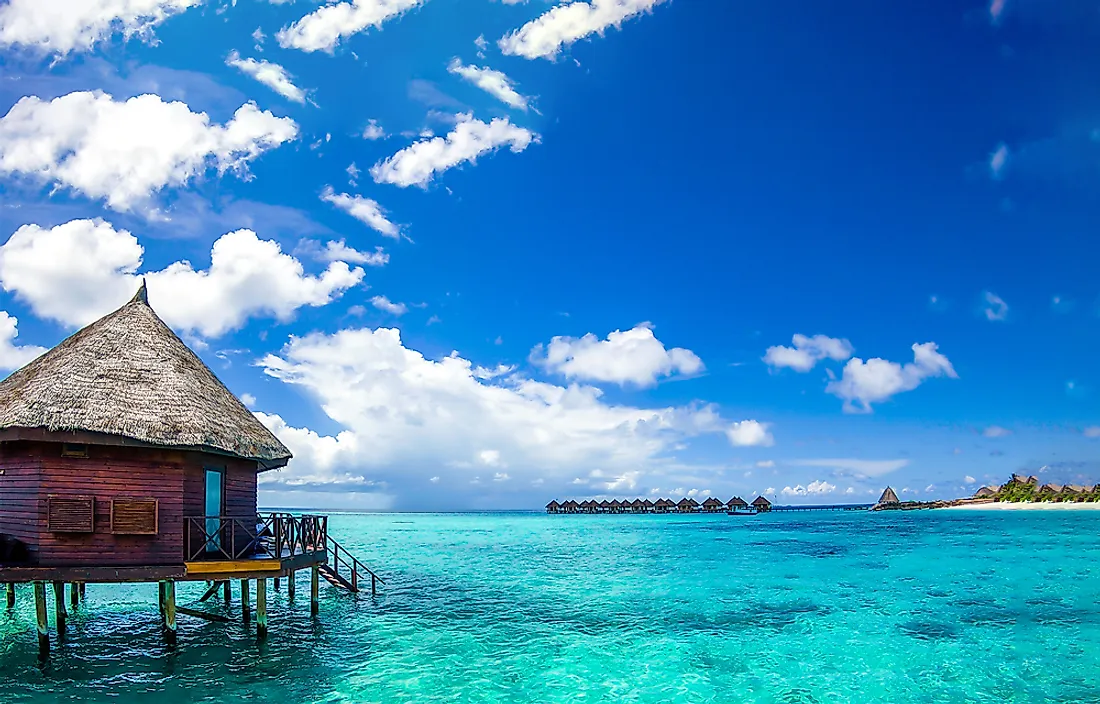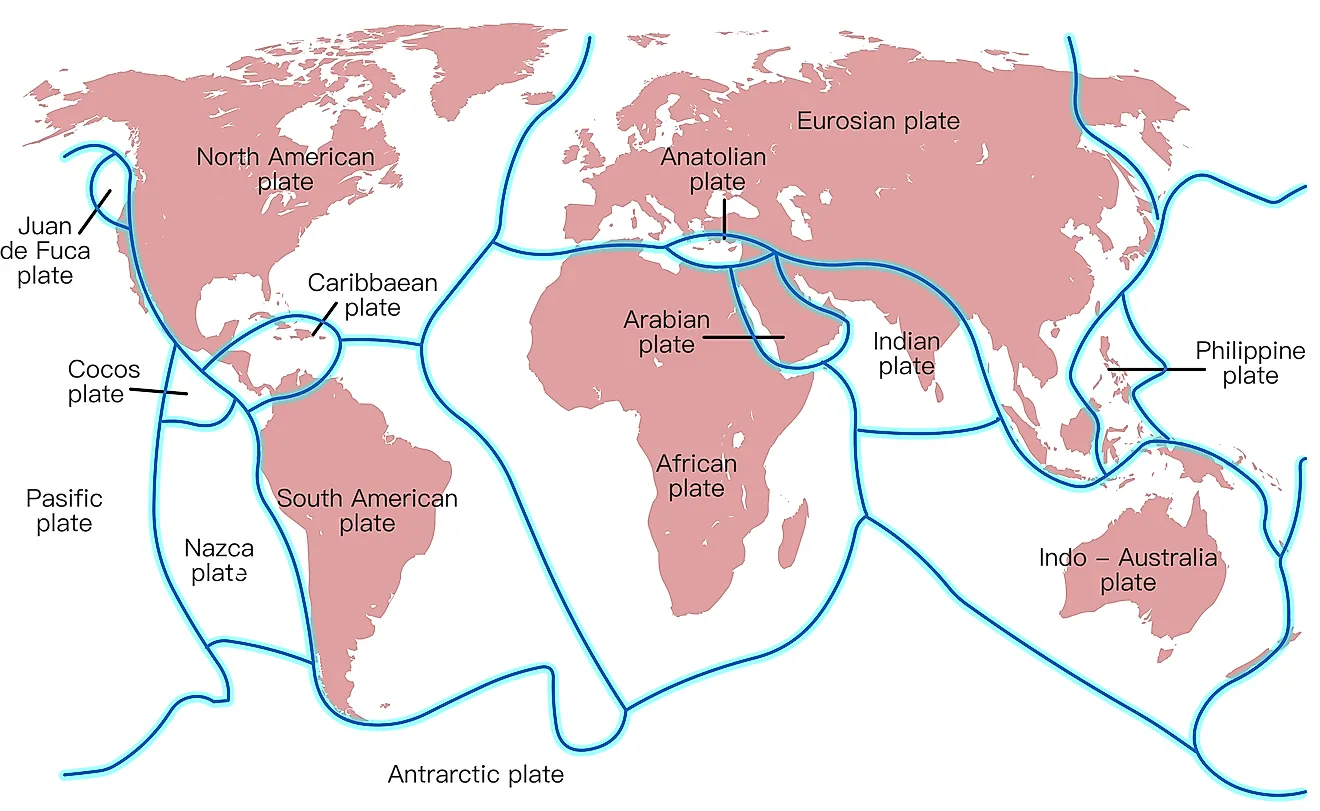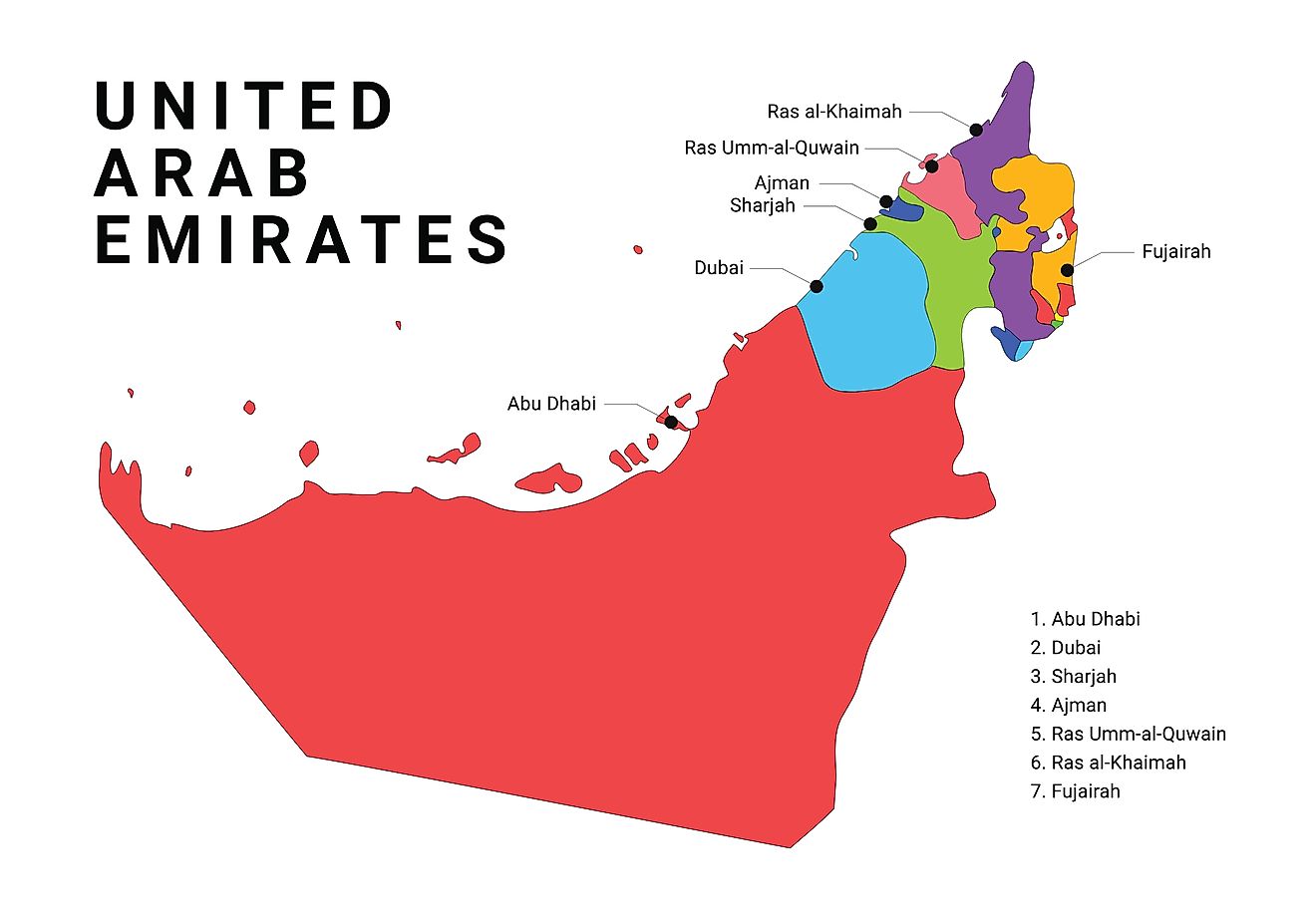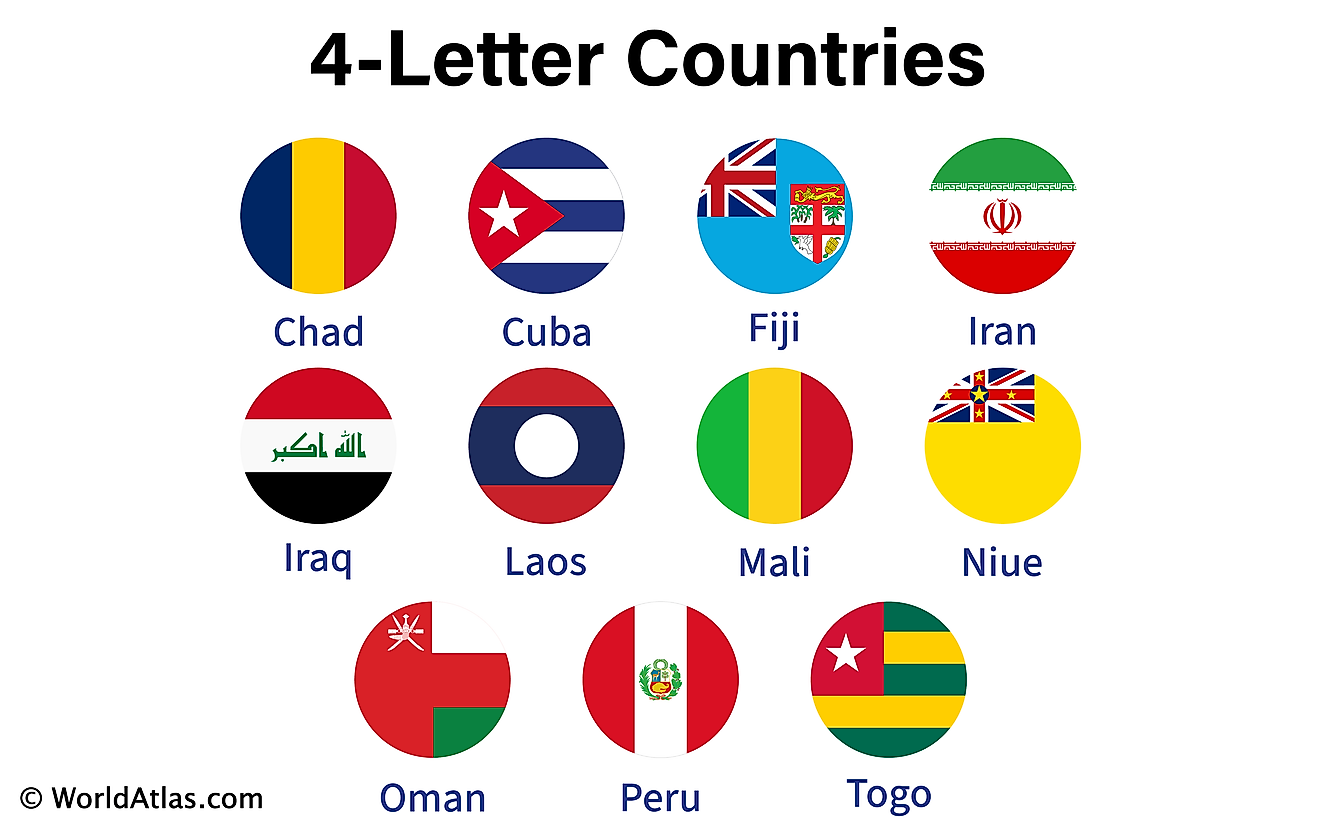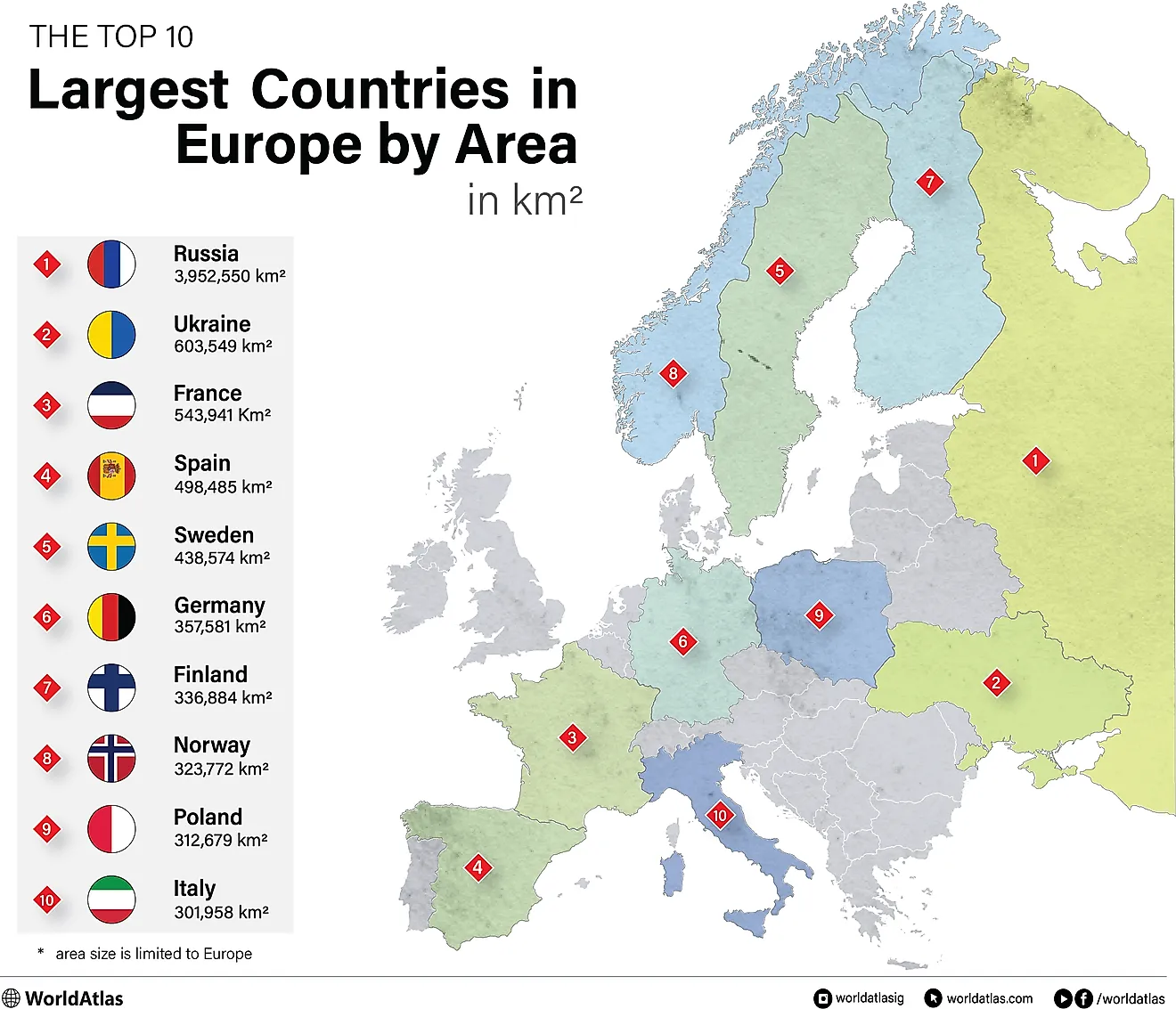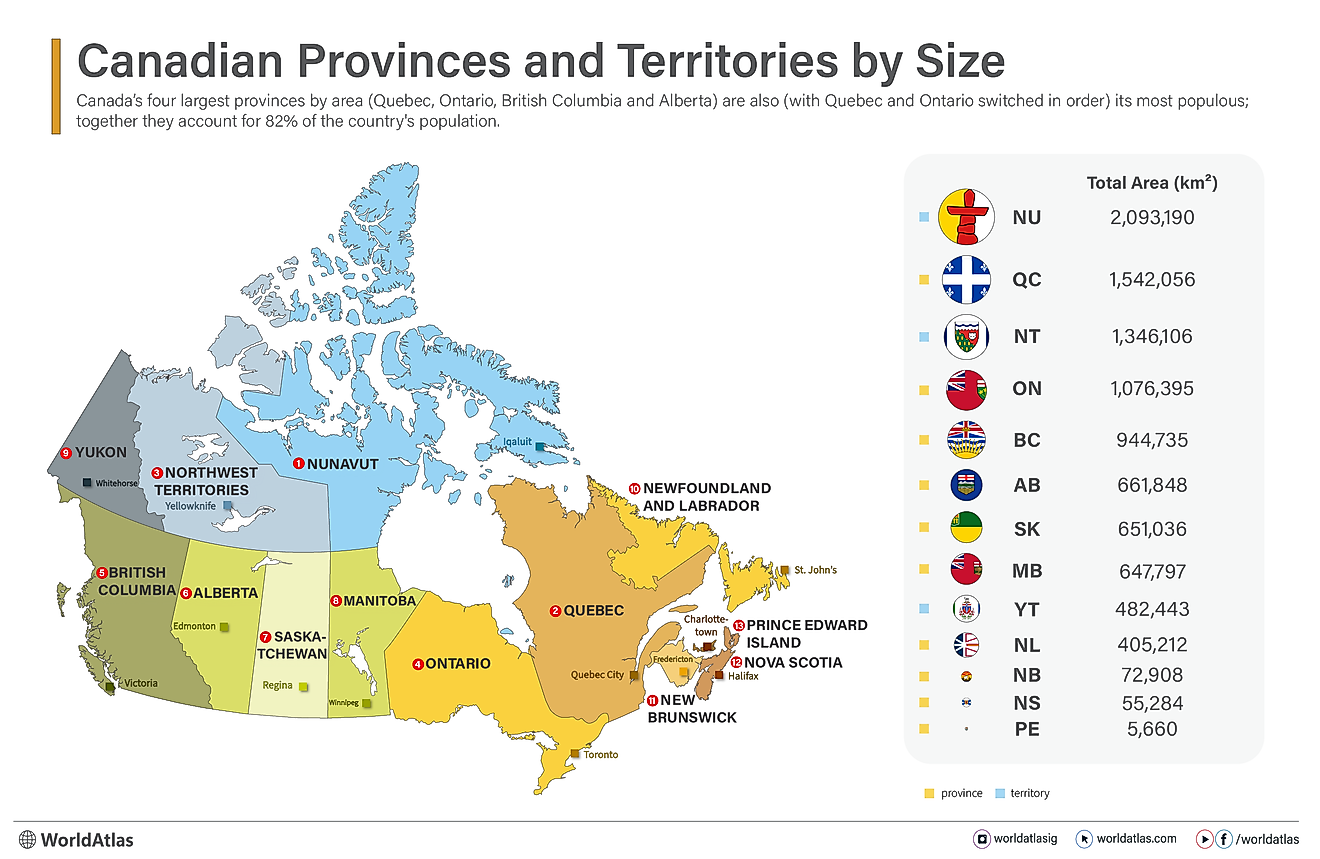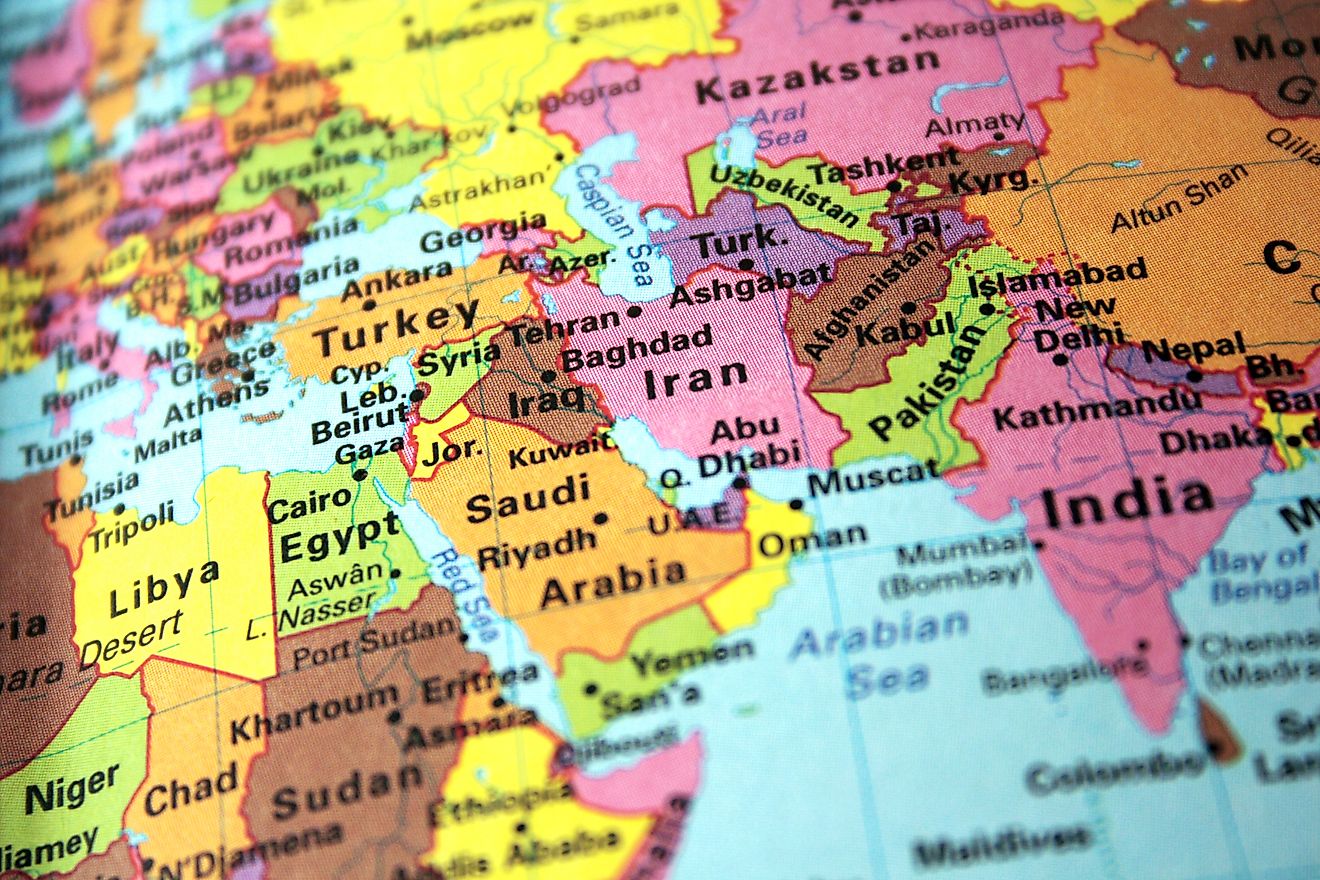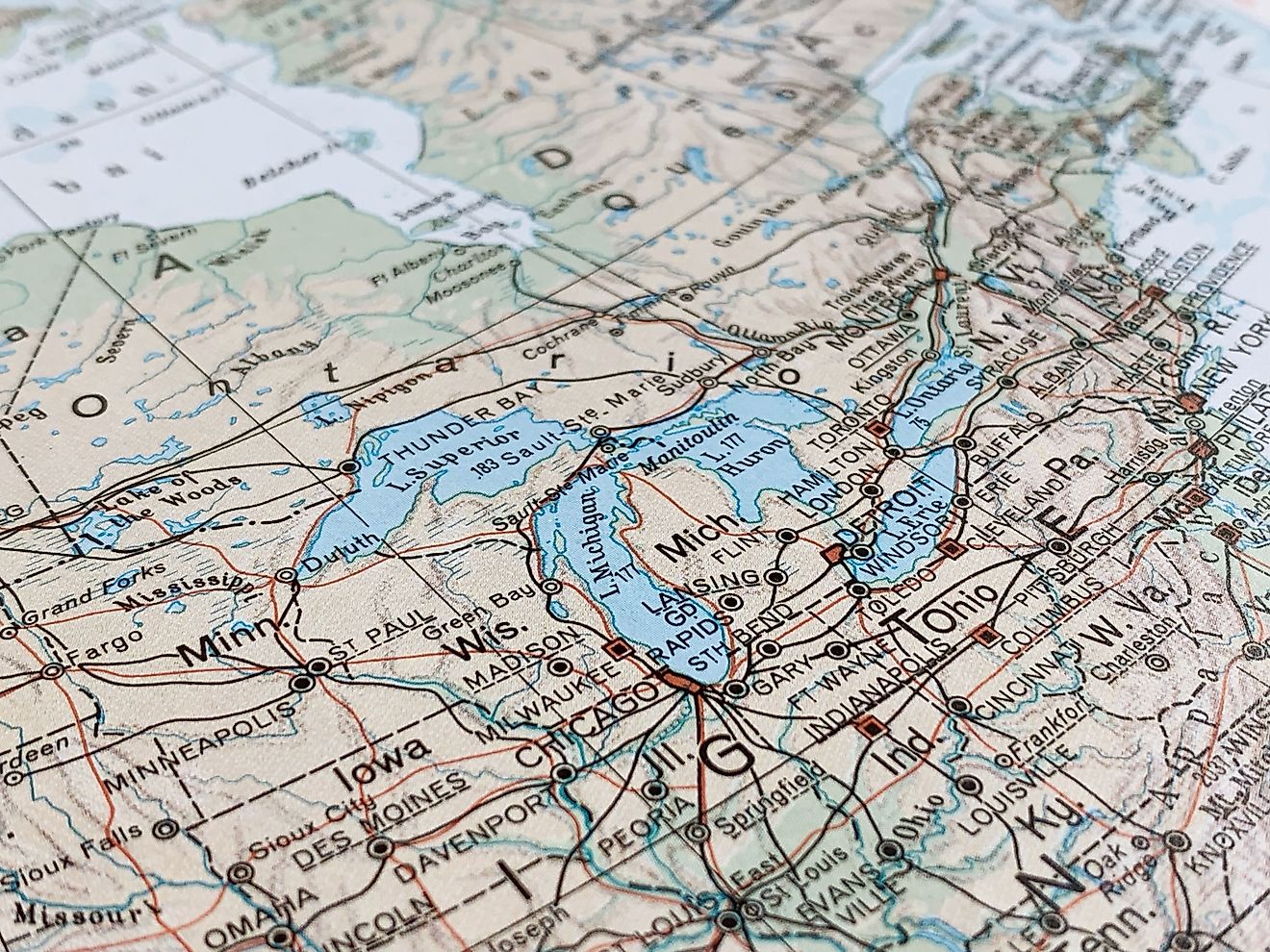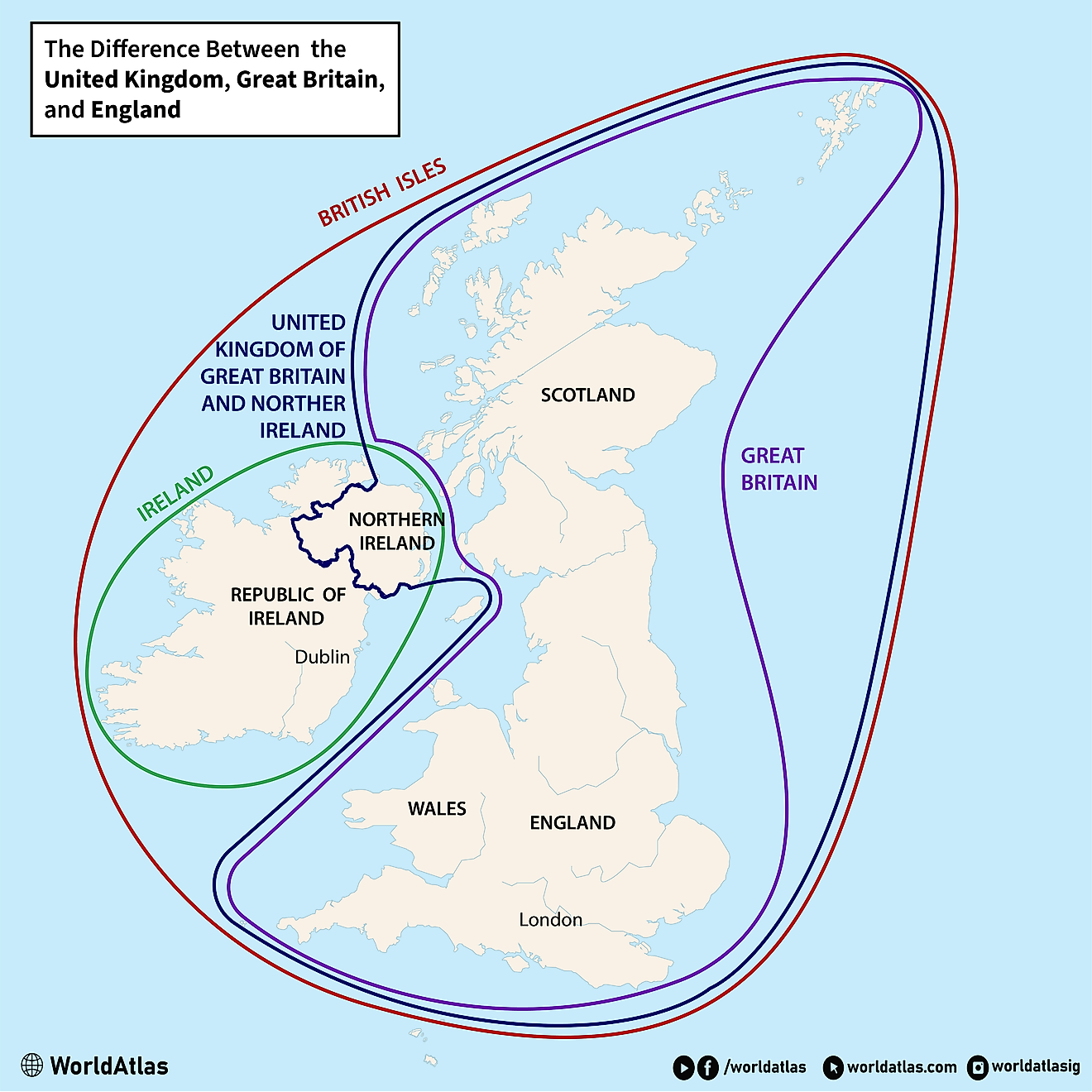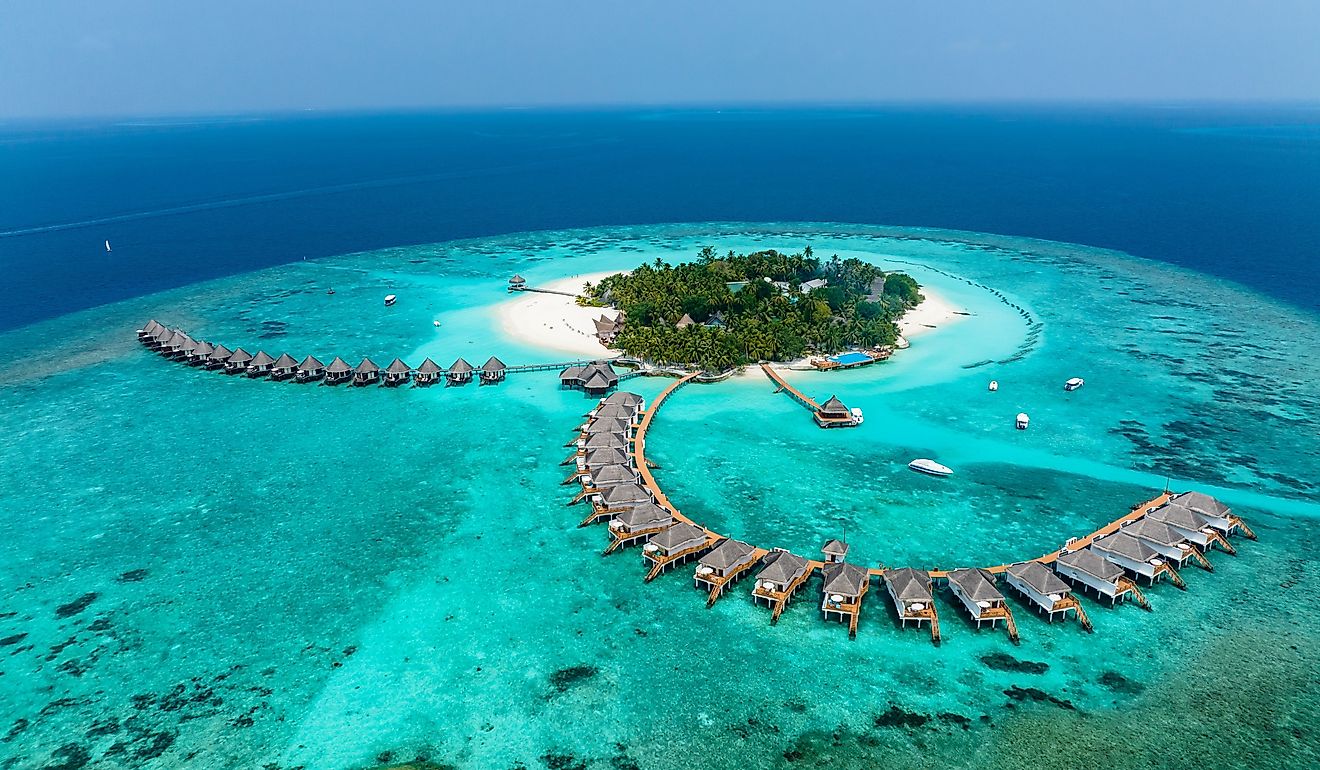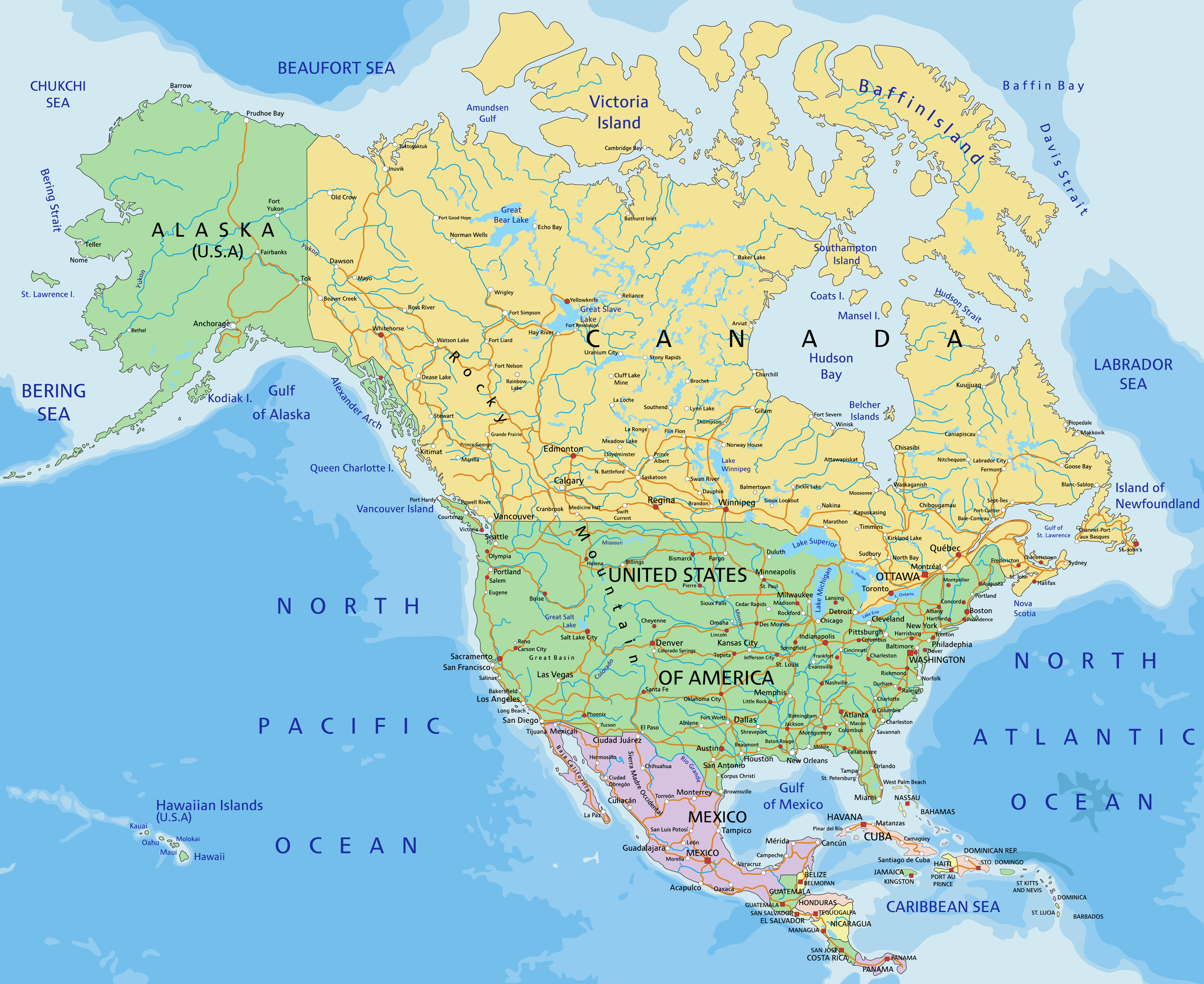
How Many Countries Are There In North America?
The North American continent, composed of 23 countries, spans approximately 24.71 million square kilometers and is home to nearly 600 million people. Indigenous groups have lived on this land for around 14,000 years, with history dramatically changed by the arrival of European colonists in the 15th century. Today, North America's diverse population speaks countless languages and celebrates a multitude of cultures, reflecting its many millennia of history.
The Countries Of North America
| Countries | Population 2024 | Land Area |
|---|---|---|
| Antigua and Barbuda | 103,600 | 443 km² |
| Bahamas | 409,000 | 13,880 km² |
| Barbados | 263,700 | 430 km² |
| Belize | 465,000 | 22,966 km² |
| Canada | 42,069,000 | 9,984,673 km² |
| Costa Rica | 5,191,000 | 51,100 km² |
| Cuba | 11,054,000 | 110,860 km² |
| Dominica | 63,200 | 751 km² |
| Dominican Republic | 10,954,000 | 48,670 km² |
| El Salvador | 6,351,000 | 21,041 km² |
| Grenada | 116,400.00 | 344 km² |
| Guatemala | 16,564,000 | 108,889 km² |
| Haiti | 12,436,000.00 | 27,750 km² |
| Honduras | 9,895,000.00 | 112,090 km² |
| Jamaica | 2,753,000.00 | 10,991 km² |
| Mexico | 132,529,000.00 | 1,964,375 km² |
| Nicaragua | 6,875,000 | 130,370 km² |
| Panama | 4,307,000.00 | 75,420 km² |
| Saint Kitts and Nevis | 48,400.00 | 261 km² |
| Saint Lucia | 186,500 | 616 km² |
| Saint Vincent and the Grenadines | 112,000.00 | 389 km² |
| Trinidad and Tobago | 1,368,000.00 | 5,128 km² |
| United States of America | 341,963,000.00 | 9,833,520 km² |
Antigua and Barbuda
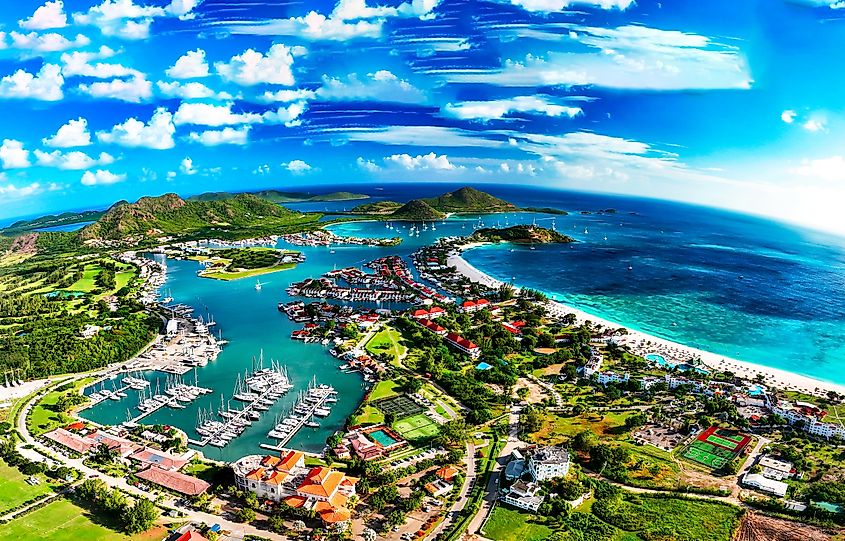
Antigua and Barbuda is a group of islands located in the eastern Caribbean. The capital is St. Johns, located on Antigua Island. Most of Antigua and Barbuda's approximately 103,600 residents are of African descent and the official language is English. Although agriculture was once the driving force of the country's economy, tourism has since largely surpassed it.
Antigua's land area is highly developed and settled, aside from hills in the southwest corner, which differs from Barbuda's forest and wetland composition. Limited fresh water is an ongoing environmental issue in the country, with tree clearing for crop production further aggravating the problem.
Bahamas
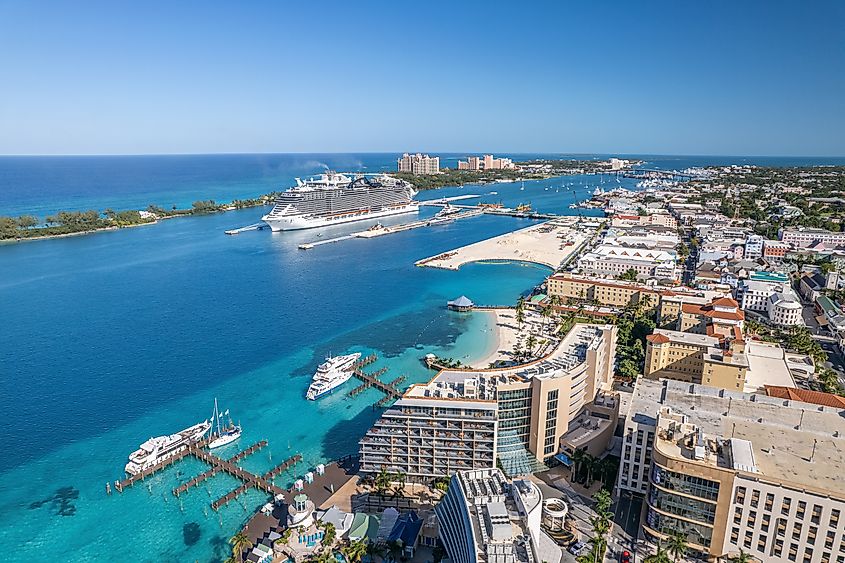
The Bahamas is an archipelago located in the northwestern segment of the West Indies. The capital, Nassau, is located on New Providence Island. It is the most populous city, has the largest port, and is only 185 miles from Miami.
The Bahamas declared independence from Britain in 1973. Notably, it was the first destination where Christopher Columbus landed in the Americas. Today, the country's population typically has a blend of African and European heritages. Due to a lack of natural resources, the country's economy now largely depends on its tourism sector, which thrives from its beautiful beaches and pleasant climate.
Barbados
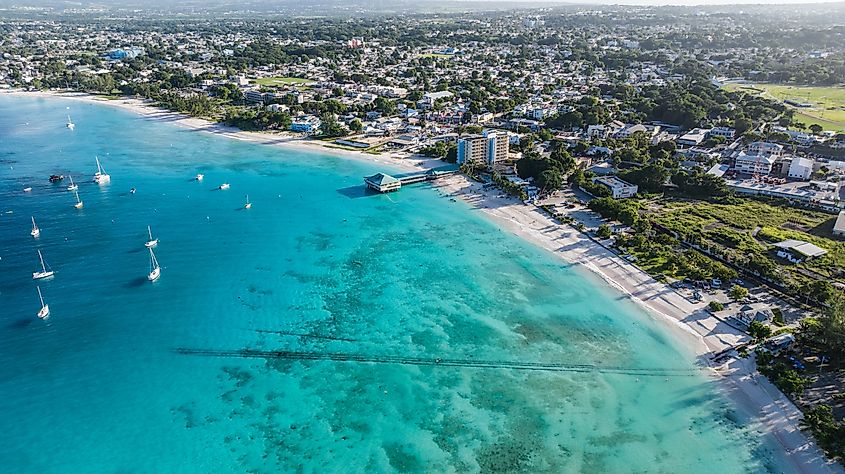
Barbados is a triangular-shaped island in the southeast Caribbean. The capital and most populous city, Bridgetown, is home to just over 98,000 people. Compared to the nearby Lesser Antilles archipelago, Barbados is much flatter and has far fewer variations in wildlife.
Due to Barbados' extensive history with Britain, it is arguably more British than other Caribbean islands, although African cultural roots remain prominent. English is Barbados’ official language, although it is not uncommon for people to speak Bajan, an English-based Creole.
Belize
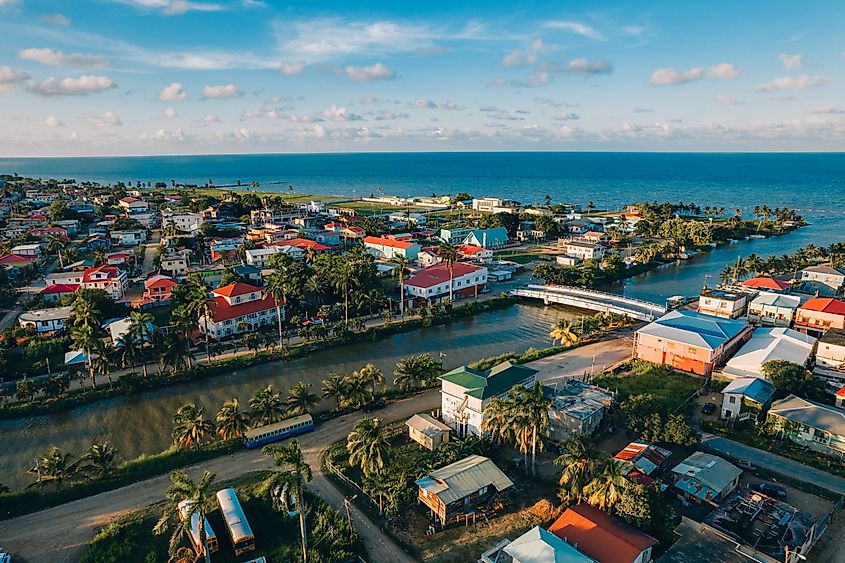
Belize, a small country in Central America, shares a border with Mexico to the north and Guatemala to the south and west. To the east, it has a coastline along the Caribbean Sea. Belize has a population of just 465,000 people. The capital is Belmopan, although most Belizeans live in Belize City. Over half of the population resides in rural areas.
Although in Central America, Belize is often regarded as a Caribbean country due to its history, which closely resembles that of English-speaking Caribbean countries. In fact, it is the only Central American country that has English as its official language. Culturally, however, it has many similarities to its Central American neighbors.
Canada
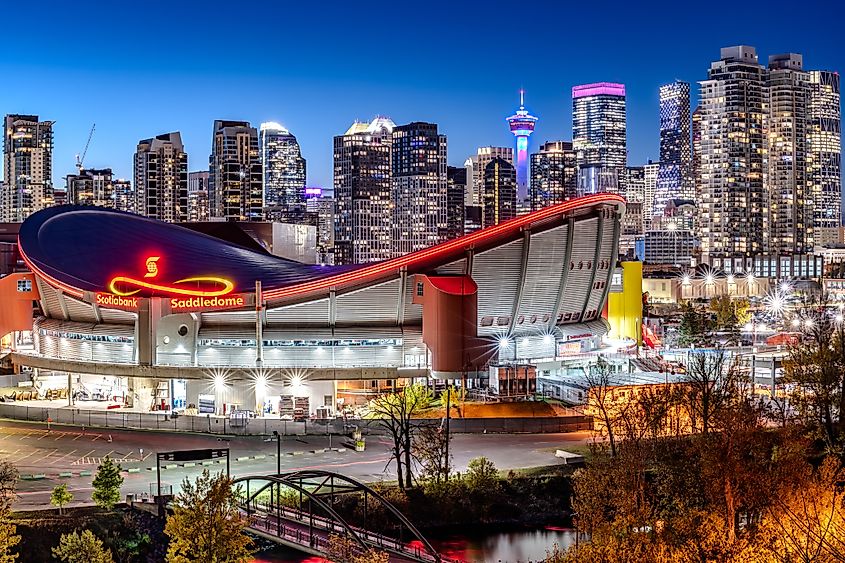
Canada, situated in the northern part of North America, shares its southern border with the United States and has coastlines along the Atlantic Ocean to the east and the Pacific Ocean to the west. Regarding land area, it is the second largest country worldwide, after Russia. The capital is Ottawa, while the most populous city is Toronto.
Because most of the land in the north is non-arable, more than 60% of Canadians reside in the two provinces of Quebec and Ontario. Colonized by both the French and British, both English and French are considered official languages of the country today.
Costa Rica
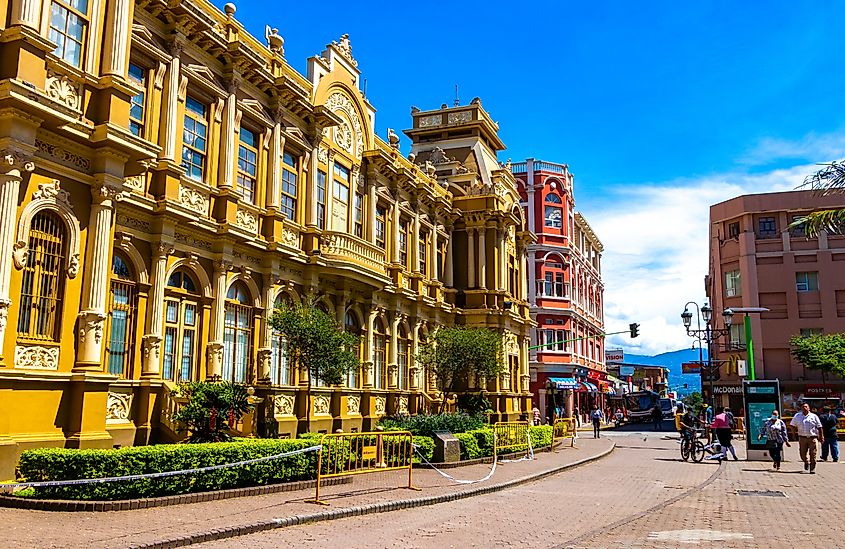
Located in Central America, Costa Rica borders Nicaragua to the north and Panama to the southeast. It is flanked by the Caribbean Sea to the east and the Pacific Ocean to the west. San Jose is both the capital and most populous city of the country.
Costa Rica is known for having one of the most stable and democratic governments in Central America. It stands out as one of the few countries without a military and boasts one of the highest literacy rates in the Americas.
Cuba
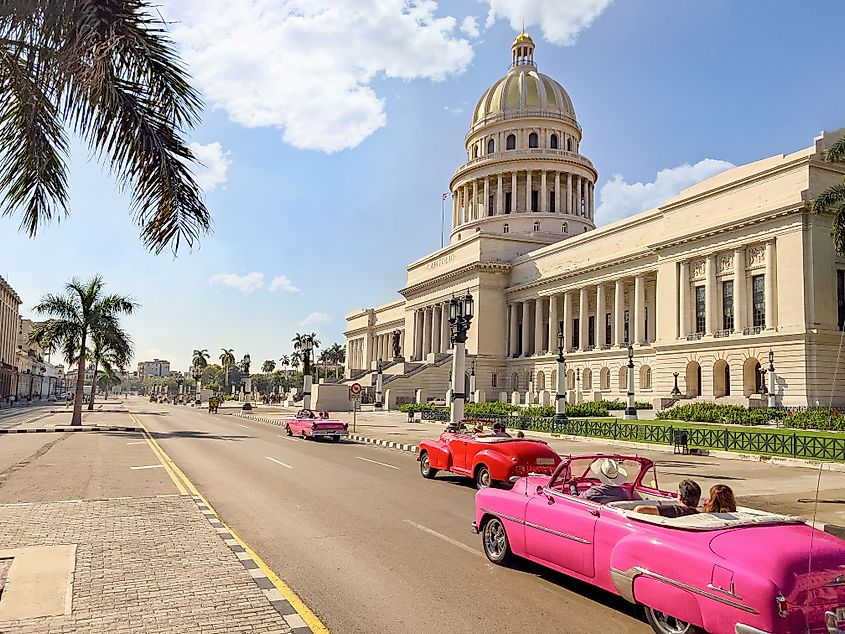
Located in the Caribbean Sea, Cuba stands as the largest island in the West Indies archipelago. Positioned south of Florida and the Bahamas, and north of the Cayman Islands and Jamaica, Havana is the capital and most populous city of the country. The population of approximately 11.05 million is primarily of Spanish and African descent and Spanish is the official language.
Although sugar exports once dominated the Cuban economy, tourism surpassed it in the 1990s. Despite economic challenges, Cuba maintains a literacy rate of approximately 99.8%, one of the highest in the world. The island is also renowned for its vibrant music and dance culture, with rumba, bolero, and salsa being among the most popular dance styles.
Dominica
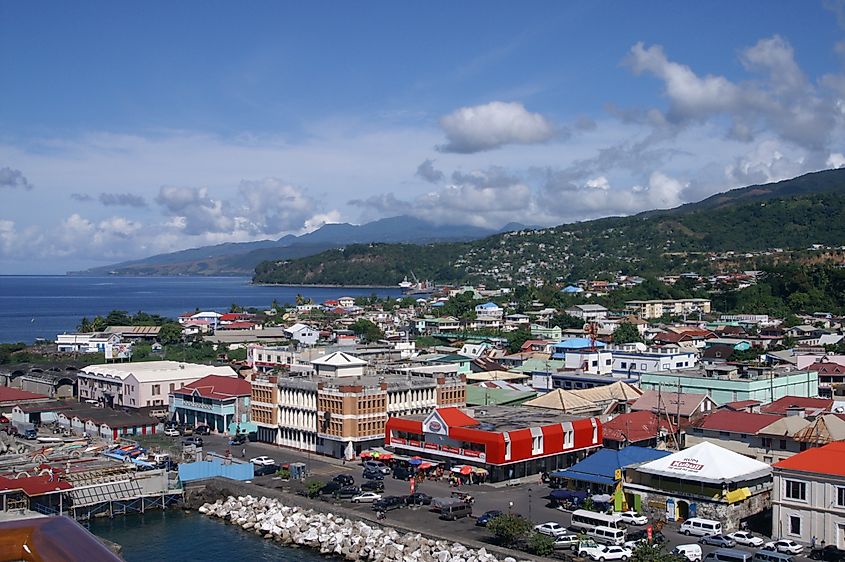
Dominica lies in the eastern Caribbean Sea and is one of the islands in the Lesser Antilles. The French islands of Marie-Galante and Guadeloupe neighbor it to the north, while Martinique neighbors it to the south. Roseau is both the capital and most populous city of the country. The island spans a mere 47 by 26 kilometers and has a population of just 63,200.
Dominica has various active volcanoes, although eruptions are uncommon. The island is known for its lush rainforests, diverse flora and fauna, and Boiling Lake, the second-largest hot spring in the world.
Dominican Republic
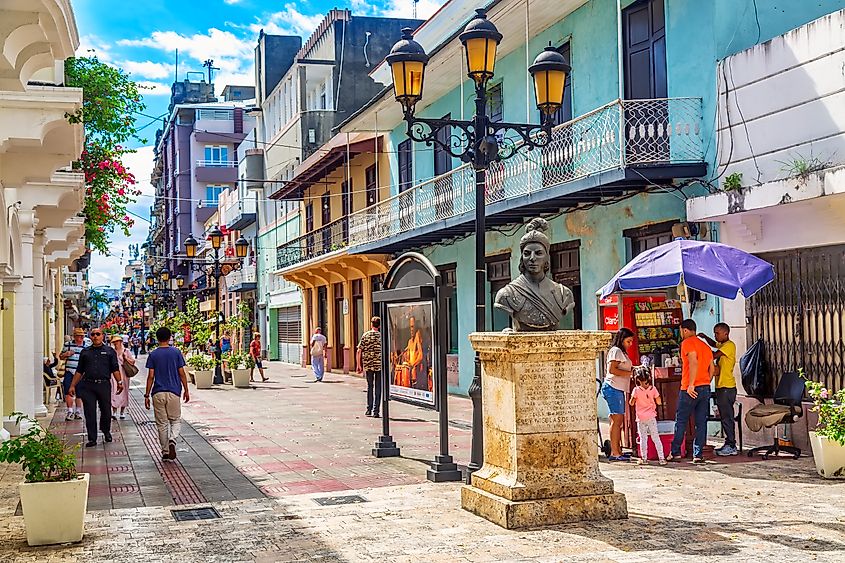
The Dominican Republic, located on the island of Hispaniola in the Caribbean Sea, shares its eastern border with Haiti. Santo Domingo, the capital and most populous city, is considered one of the most modern metropolises of the Caribbean. The Dominican Republic is home to approximately 10.95 million residents.
The Dominican Republic features diverse landscapes, including mountains, alpine forests, and deserts. African, European, and Indigenous Taino elements influence its culture. Merengue, the national music and dance genre, embodies this cultural blend.
El Salvador
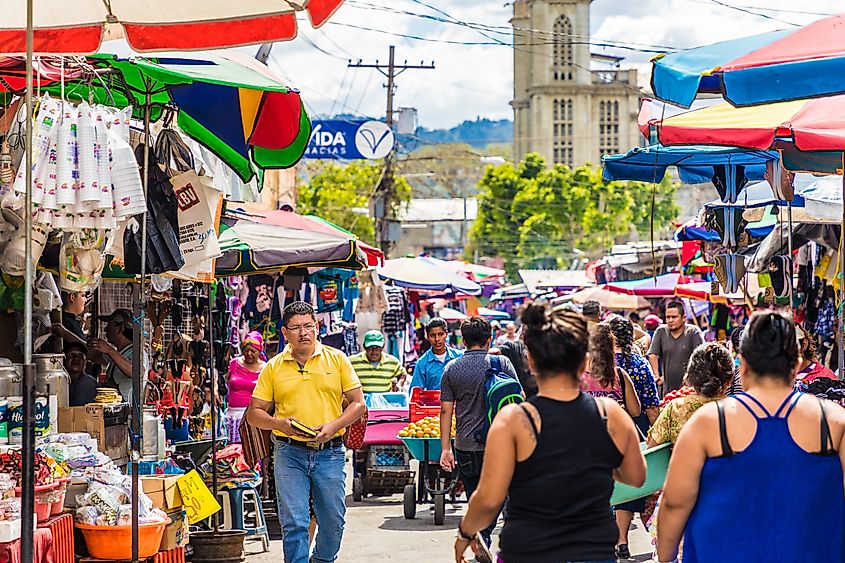
Located in Central America, El Salvador shares its northern border with Guatemala and Honduras, skirting the Pacific Ocean to the south. With a population of about 6.35 million and a land area of 21,041 square kilometers, it is the smallest and most densely populated country in Central America. San Salvador is the capital and most populous city.
El Salvador is rich in biodiversity, with tropical jungles, volcanoes, mountains, lagoons, rivers, and lakes. Unique species such as quetzals, tapirs, ocelots, and spider monkeys inhabit its landscapes. Its culture today results from historic Mesoamerican and Iberian cultures, with Spanish being the official language.
Grenada
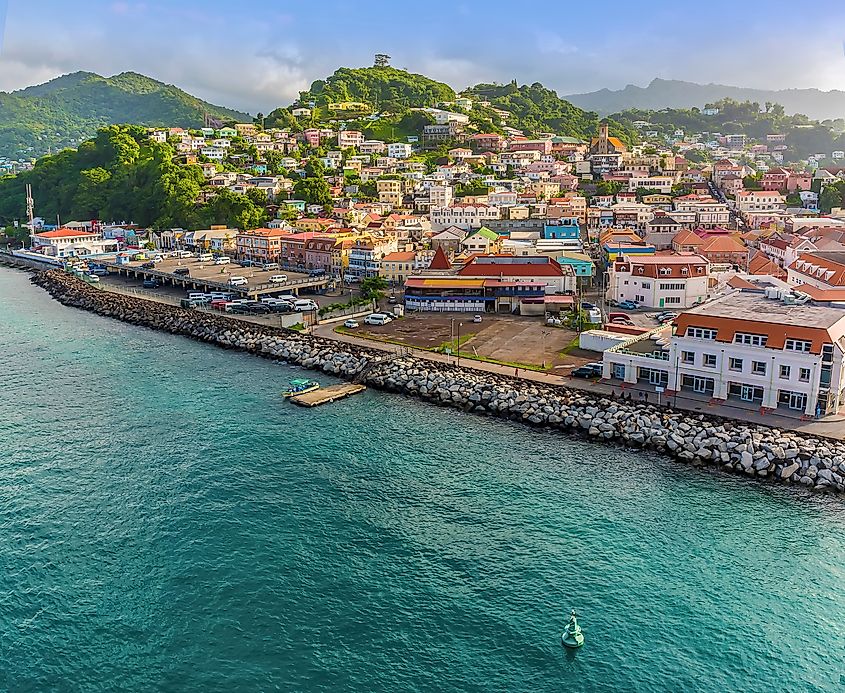
Grenada, located in the eastern Caribbean, is an island in the West Indies. It is about 160 kilometers north of Venezuela. The capital and most populous city is St. George’s. The country has a small population of about 116,400 people.
Known as the “Island of Spice,” Grenada is a leading producer of nutmeg and mace. The island's modern culture reflects its history of British and French colonization in the 18th century and the arrival of African slaves. Every August, Grenada celebrates Carnival, featuring vibrant Soca and Calypso music.
Guatemala
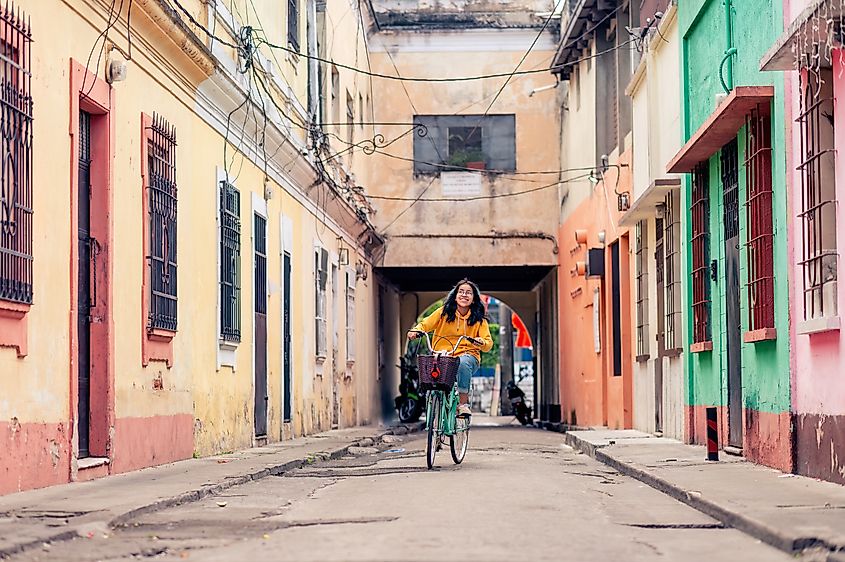
Guatemala is part of Central America, sharing borders with Mexico to the northwest, Belize to the northeast, and Honduras and El Salvador to the southeast. Guatemala is the capital and most populous city. The country boasts a population of approximately 16.56 million.
Indigenous cultures, particularly the Mayans, continue strongly influencing the country's culture. Beans, chilis, and corn are staples of the cuisine, with tamales being one of the most traditional foods, which reportedly has hundreds of varieties countrywide.
Haiti
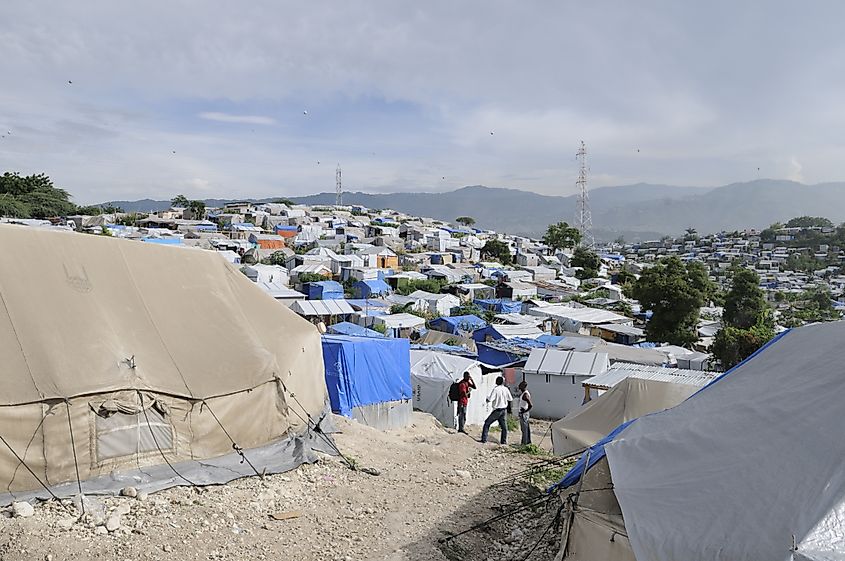
Haiti is part of the Hispaniola island and neighbors the Dominican Republic. Is located between the Caribbean and North Atlantic Ocean. The population is approximately 12.45 million and Port-au-Prince is both the capital and most populous city.
Haiti was the second country in the Americas to gain independence, achieving it through a slave revolt against French colonists. Today, Haiti's Creole culture is influenced by Taino, African, and European elements and is rich in folklore traditions. French and Haitian Creole are the country’s official languages.
Honduras
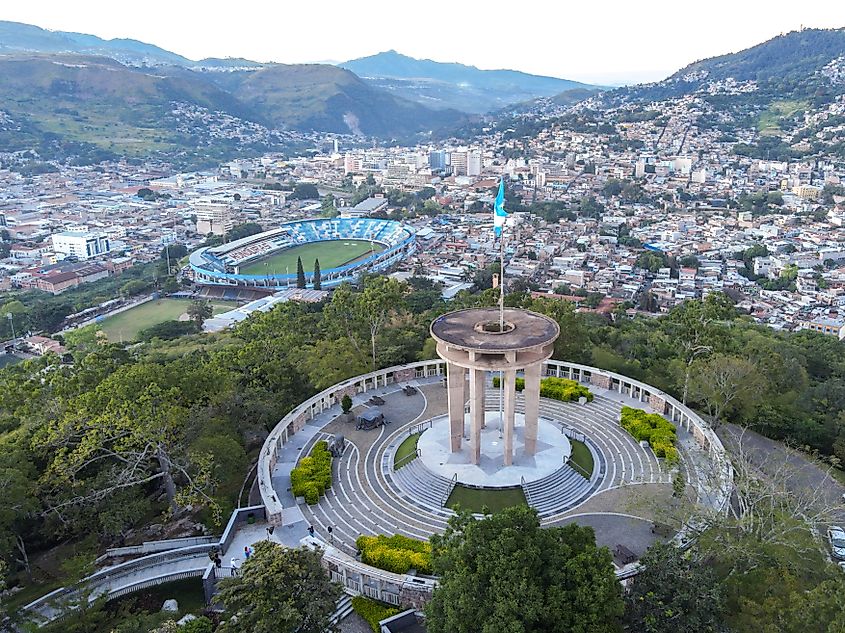
Honduras is a Central American country, neighbored by Nicaragua to the southeast and El Salvador and Guatemala to the west. It has a northern coastline along the Caribbean Sea and a little sliver of southern coastline along the Pacific. Tegucigalpa is the capital and most populous city, while San Pedro Sula is an important city commercially and industrially.
Exports are crucial to the Honduran economy, with coffee, sugar cane, and tropical fruits being among the most significant. However, poverty remains a pressing national issue, and Honduras is the only Latin American country where poverty has not decreased in recent years.
Jamaica
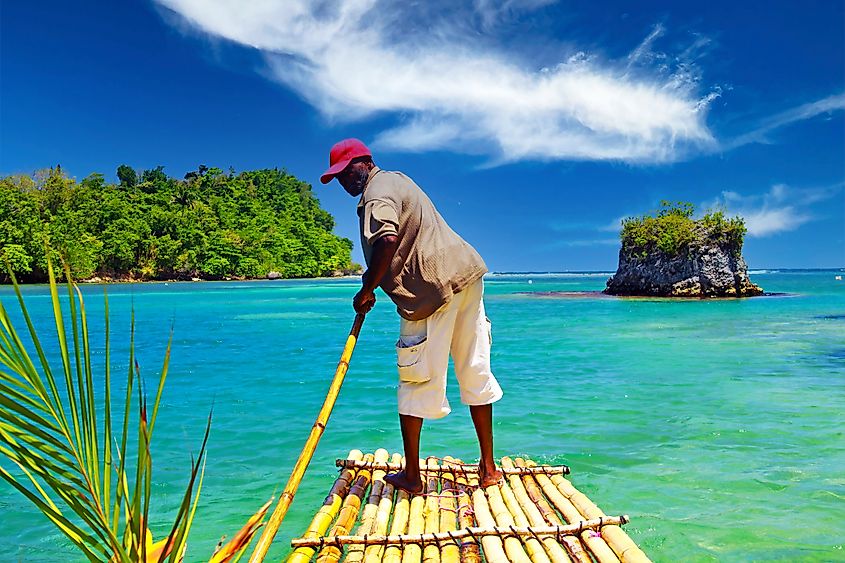
Jamaica, situated in the West Indies, is the third largest island in the Caribbean. It is about 150 kilometers south of Cuba and 160 kilometers west of Haiti. Kingston is Jamaica’s capital and most populous city.
Jamaica, widely recognized as the birthplace of reggae and Bob Marley, boasts a thriving tourism sector. Its picturesque beaches and all-inclusive resorts contribute to nearly one-third of the country’s GDP. It was colonized by both the Spanish and British, fully declaring independence from the British in 1962.
Mexico
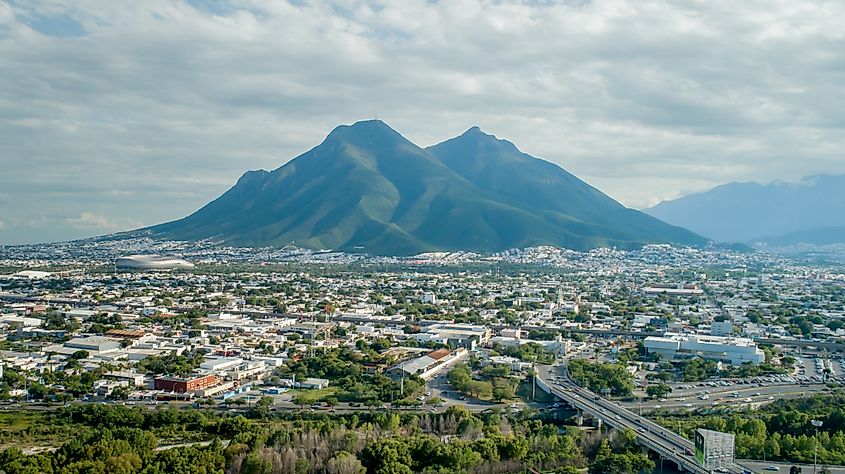
Mexico, sharing a northern border with the United States and a southeastern border with Guatemala and Belize, is home to roughly 132.53 million people. The capital, Mexico City, is the most populous city in the country and one of the most populated metropolitan areas in the world. Nearly four-fifths of Mexicans reside in urban areas.
Approximately 12% of the earth’s known species can be found in Mexico, making it one of the most biodiverse countries worldwide. Mexico has a large tourism industry as well, with Chichen Itza and Cancun being two of the most visited locations in the country.
Nicaragua
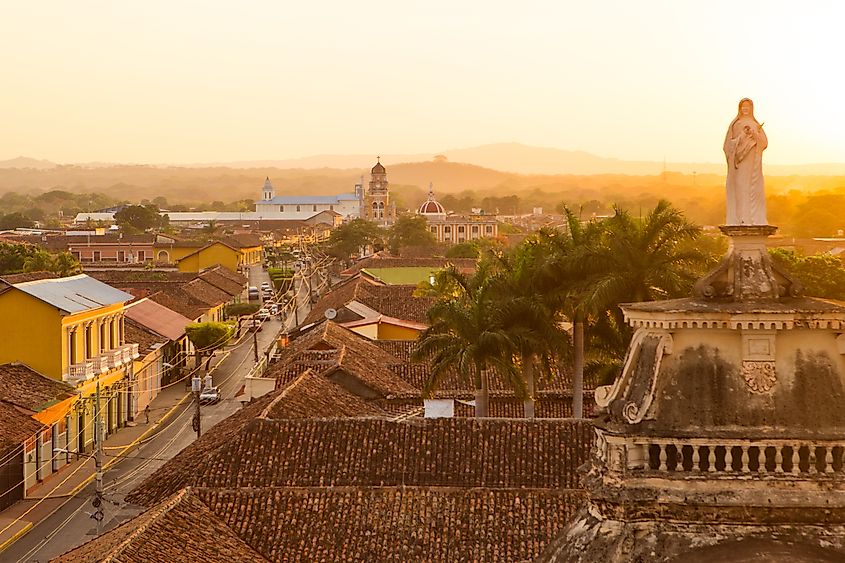
Nicaragua, a Central American country, is situated between Honduras to the northwest and Costa Rica to the south. Managua, the capital and most populous city, is home to a significant portion of the country's 6.88 million residents. Most of the population, as well as the majority of economic activity, is concentrated in the western region.
Nicaragua earned its nickname as the “land of lakes and volcanoes” due to its 19 volcanoes and 36 lakes. It also boasts the second-largest rainforest in the Americas, the Bosawás Biosphere Reserve.
Panama
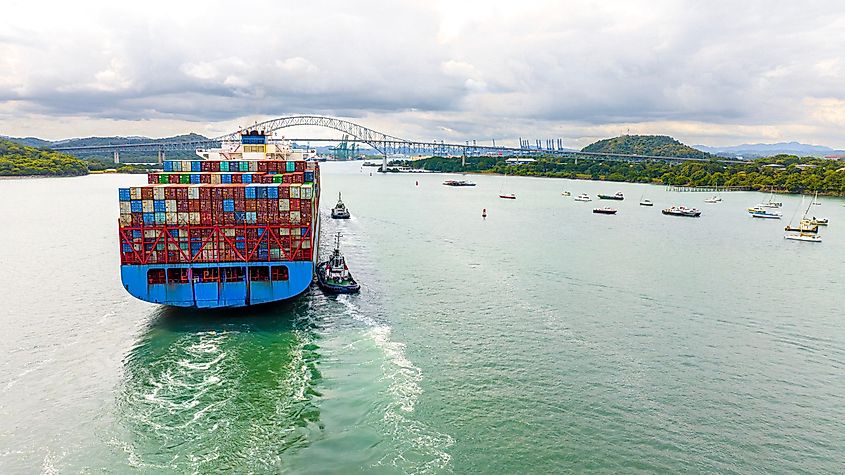
Panama is the southernmost country in North America and borders Costa Rica to the west and Colombia to the east. It is situated along the Isthmus of Panama, the strip of land connecting North and South America. The capital and most populous city is Panama City.
Panama is renowned worldwide for the Panama Canal, a manmade waterway that connects the Pacific and Atlantic Oceans, significantly reducing ship travel time. As a cultural melting pot, Panama boasts a diverse array of music styles, including salsa, cumbia, tango, soca, and more.
Saint Kitts and Nevis
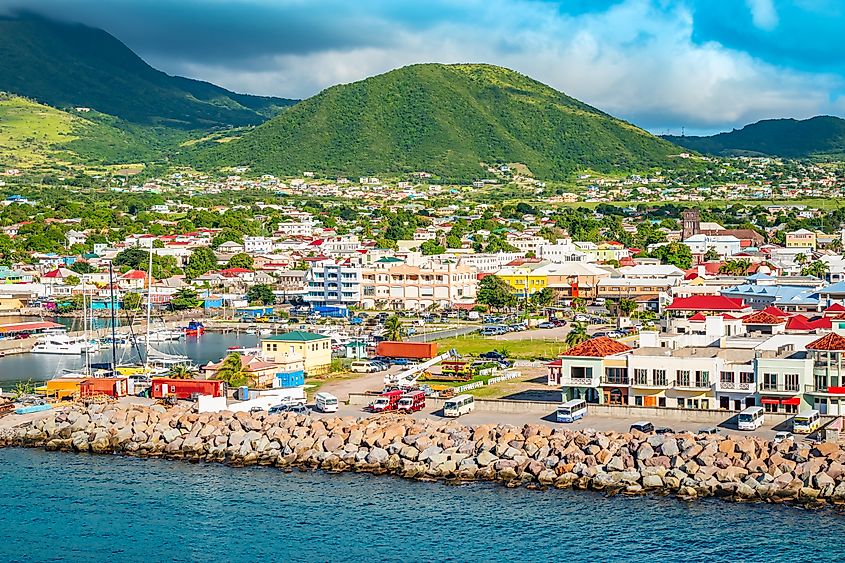
Saint Kitts and Nevis is a country comprising two islands in the Lesser Antilles, in the eastern portion of the Caribbean Sea. Basseterre is both the capital and most populous city, located on Saint Kitts island. The country has a small population of roughly 48,400 people.
France and Britain colonized the islands, and it did not become a fully independent country until 1983. Carnival is a big cultural tradition on the island, taking place every December through around the New Year.
Saint Lucia
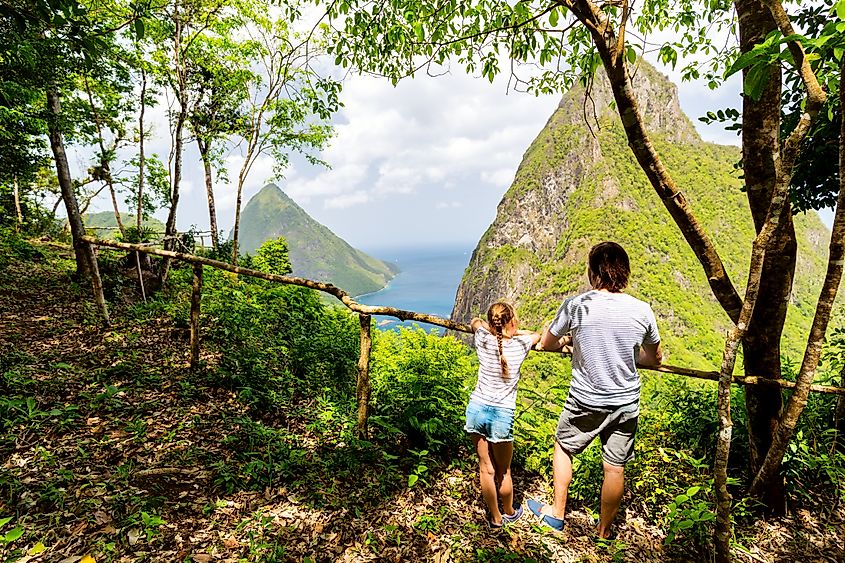
Part of the Lesser Antilles, Saint Lucia is located between the Caribbean and North Atlantic Ocean. The country’s capital and most populous city is Castries. Like many other Caribbean island countries, it has a small population, which currently stands at around 186,500 people. The official language is English, although most people also speak French patois.
Tourism overwhelmingly drives the economy, representing about 65% of its GDP. The Pitons, which are two volcanic plugs, Pigeon Island, which holds the ruins of Fort Rodney, and the town Soufrière are a few of the most touristic landmarks.
Saint Vincent and the Grenadines
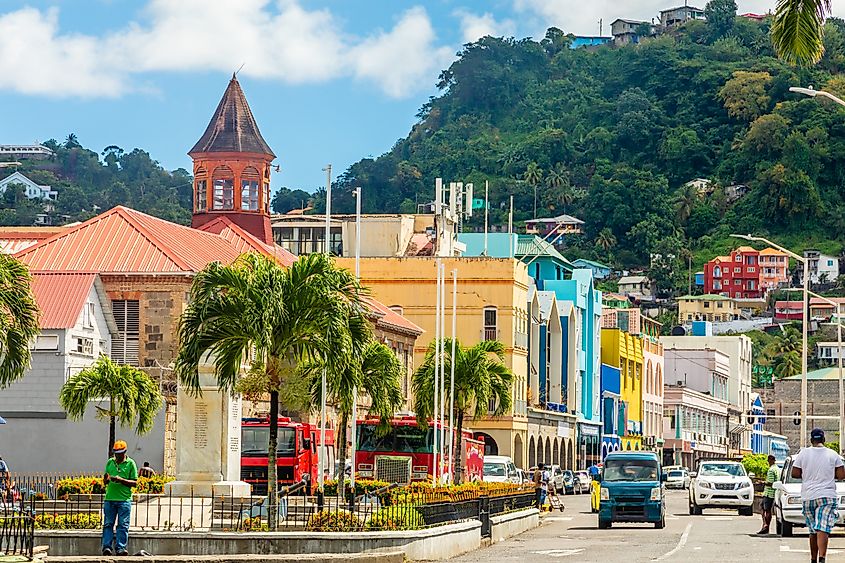
Saint Vincent and the Grenadines is composed of 32 islands that lie in the eastern Caribbean sea, as part of the Lesser Antilles. It is approximately 160 kilometers west of Barbados and 32 kilometers southwest of Saint Lucia. Kingstown is both the capital and largest city, located on Saint Vincent. It has a population of about 112,000.
Both the British and French colonized the country, and it did not fully gain independence until 1979. Between 300,000 and 400,000 tourists typically visit Saint Vincent and the Grenadines every year, with black sand beaches, volcanic landscapes, and all-inclusive resorts being a few of its well-known attractions.
Trinidad and Tobago
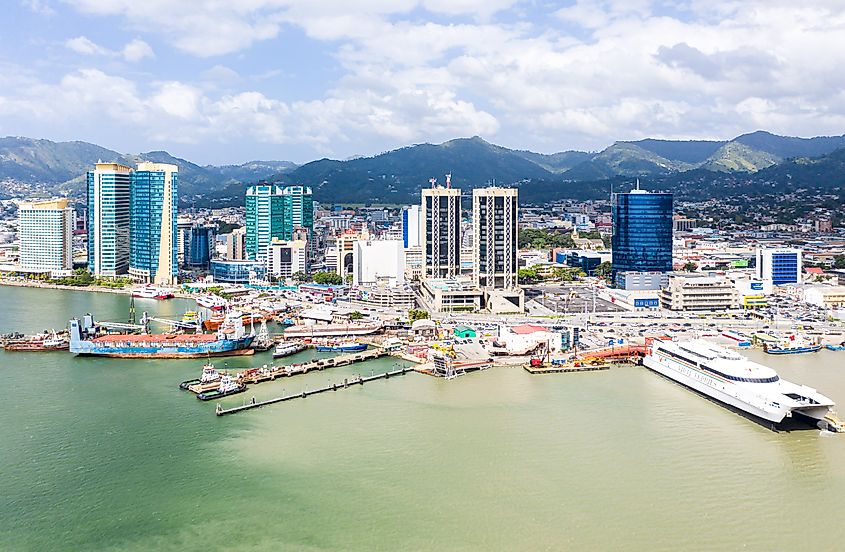
Trinidad and Tobago, located in the West Indies, lies just 11 kilometers northeast of the Venezuelan coast. The capital is Port of Spain, although the most populous city is Chaguanas. The country has an estimated population of 1,368,000 people.
Trinidad and Tobago features a unique blend of African and Indian cultures, showcased in celebrations like Diwali, Carnival, and Hosay. The country is also the birthplace of the famous limbo dance and features a variety of music styles, including soca, calypso, parang, and chutney.
United States of America
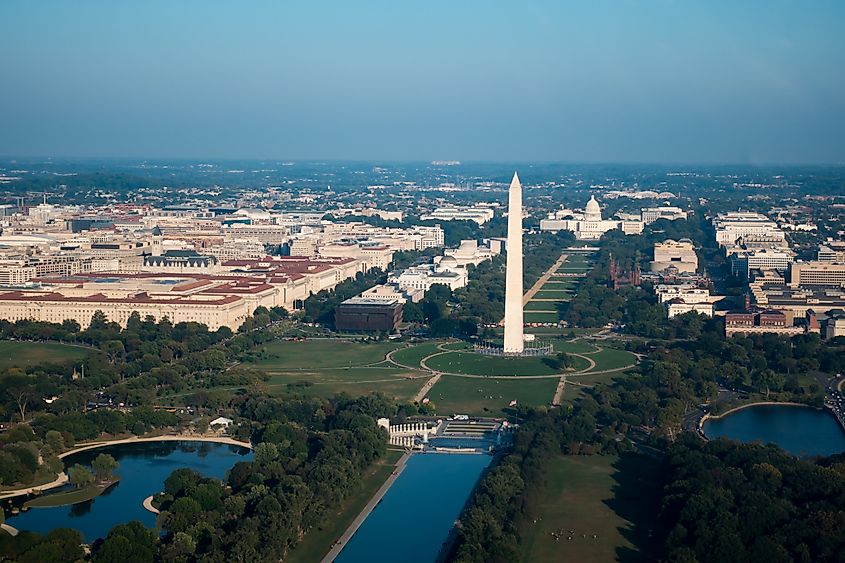
The continental United States shares borders with Canada to the north and Mexico to the south, while the state of Alaska borders Canada to the east. The capital is Washington D.C., although the most populous is New York City. With a population of 341.96 million people, it is the third most populous country in the world.
At the federal level, the United States does not have an official language. However, several states have designated their official language as English. In 2023, 67.3 million people visited the country. Times Square, Walt Disney World, and the Las Vegas Strip are a few of the most visited destinations.
Conclusion
From the Caribbean islands to the Central American metropolises to the renowned tourist attractions of the northern regions, each and every country in North America features a unique history that has shaped its contemporary society and culture. Collectively, these diverse elements form a continent rich in heritage and vibrant traditions, drawing millions of visitors from around the globe to experience and appreciate its dynamic character.
